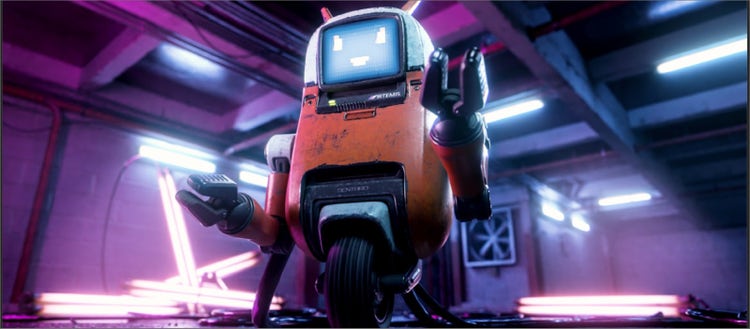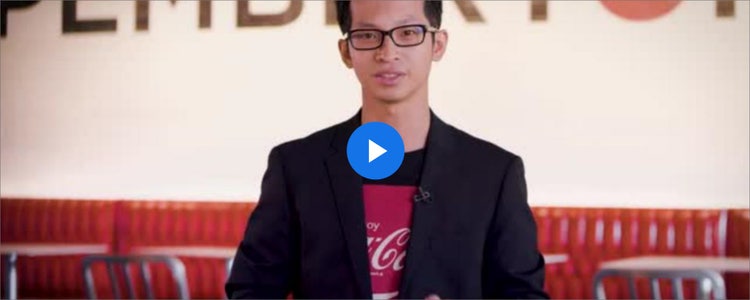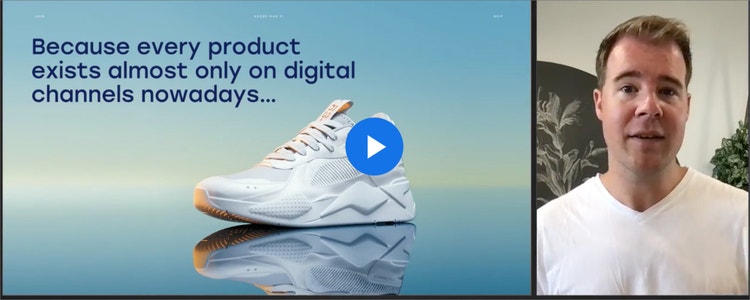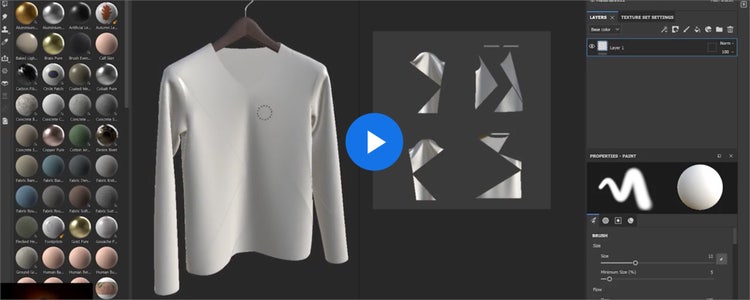How innovative uses of 3D are transforming entire industries

No longer just the domain of stunning visual effects in award-winning blockbuster movies, TV shows, and video games, 3D technology is also increasingly being adopted for mainstream marketing campaigns and immersive ecommerce experiences. Many creatives previously felt designing in 3D was out of reach — deeming it too complex, too expensive, or too inaccessible. That perspective is changing quickly. Businesses around the world are now realizing 3D is incredibly flexible, efficient, time and cost-effective, scalable, and sustainable, and whole industries are transforming as a result.
Adobe firmly believes 3D will be a huge force in the future of creativity. At Adobe MAX 2021, 3D and immersive technology took center stage. In his keynote, Adobe chief product officer and executive vice-president Scott Belsky explained how Adobe has democratized the access to 3D design by launching the Adobe Substance 3D Collection, a comprehensive suite of powerful interoperable tools and a growing library of thousands of assets that give creatives everything they need to create state-of-the-art 3D designs, from the beginning to the end of any project.
Innovating with Substance 3D across industries
The following key sessions at Adobe MAX, available to watch on demand, show how the community is making innovative use of the Substance 3D Collection to create compelling content for professional projects. Straddling various industries, use cases, and audiences, it’s evident that businesses are now fully relying on 3D design to transform their businesses.
Coca-Cola: Creating photorealistic product shots on the desktop
Coca-Cola recently used innovative 3D technology and a digital workflow to create a unified design experience for a new global hard seltzer brand — without any marketing budget. In his MAX talk, Benny Lee, global manager of digital design at Coca-Cola, explains how the beverage giant designed and developed the visual identity completely in-house.
“Adobe Substance 3D Stager served as a cornerstone of this initiative,” Lee says. “It’s essentially a virtual photo studio that you operate from your desktop. This meant that we could quickly develop multiple concepts and production-quality assets that were on par with a real-life photoshoot.” In the end, a small internal team at Coca-Cola managed to develop a major physical brand product in a completely new category and with a 100 percent digital workflow.

In his Adobe MAX session, Benny Lee explains how Substance 3D replaced traditional product photography for the launch of a new global brand product.
https://www.adobe.com/max/2021/sessions/na-lets-get-phygital-a-unified-design-experience-a-s250.html
An integral part of this success was also Adobe Stock. During the concept exploration phase, the team turned to Adobe Stock’s huge library of 3D models to find the assets they needed to set up realistic scenes in just hours. Designers that used Substance 3D Stager for the first time were then able to produce realistic high-fidelity 3D renders within a day, and since everyone used the same tool and were already used to working in Creative Cloud, they were able to easily share concepts with each other and iterate on new ideas at a faster pace.
“When you remove the barrier to entry and flatten the learning curve,” Lee points out, “the designers are able to focus on what they do best and directly translate the vision that they have in their mind onto the screens and bring it to life.”
INDG: Taking 3D models from digitization to full customer experience
Product visualization agency INDG helps brands such as Puma, Yves Saint Laurent, and Yamaha move into 3D and adapt digital processes. At Adobe MAX 2021, Bastiaan Geluk, INDG’s head of digital fashion, took us behind the scenes of the CGI specialists’ process and how they use 3D technology, including Adobe Substance 3D, to enable consumer engagement.
“The myth of 3D not meeting the same quality as photography is pretty much bust by now,” Geluk points out. “3D models become so realistic that consumers can’t tell if they’re looking at a photo of the product or a 3D visualization.”

In his Adobe MAX session, Bastiaan Geluk walks us through INDG’s product visualization process.
https://www.adobe.com/max/2021/sessions/emea-every-product-playable-how-cgi-enables-consum-s481.html
INDG goes through three main steps to create effective 3D implementations. The starting point is always to digitize the client’s product portfolio. Initially, the virtual samples still function as 3D sketches that help the design and marketing departments with the internal creation process. Next, the INDG team adds a photorealistic quality to the 3D assets to deliver consumer-facing visual content for ecommerce and marketing. The final step is to enhance the 3D models and put them into context to deliver rich immersive and interactive experiences, from product configurators to virtual stores and augmented reality try-ons.
Skeeva: Creating unique apparel designs with 3D tools
Freelance 3D artist Eugene Golovanchuk (aka Skeeva) specializes in digital fashion and creates high-quality apparel designs in 3D for clients like Adidas, Apple, and SpaceX. In his Adobe MAX 2021 session, he takes us through his workflow, from the initial concept of an outfit via fabric prototyping to final color correction.
Skeeva starts his projects by quickly creating a 3D concept in Marvelous Designer, which he then imports into Substance 3D Painter to create more detailed fabric combinations and texturing with the help of Substance 3D Assets. In the next step, Skeeva sends his design to Substance 3D Stager to make the outfit stand out with a basic camera and lighting setup. Finally, the render is finalized in Photoshop with some fast color corrections and minor tweaks.

In his Adobe MAX session, Skeeva guides us through his workflow and explains how he moves through several apps to create his 3D designs.
https://www.adobe.com/max/2021/sessions/na-creating-unique-apparel-designs-with-3d-tools-s476.html
This session demonstrates not only how powerful these apps are for the creation of state-of-the-art 3D fashion designs, but also how they integrate with each other, forming a connected toolset that gives creatives everything they need to create 3D content with uncompromising detail and realism.
Discover the future of 3D and browse Adobe MAX’s 3D track
There are loads more 3D sessions from Adobe MAX 2021 to watch on demand, ranging from practical training and tutorials aimed at helping you grow your 3D skills to inspirational presentations that take you behind the scenes of how leading artists and brands use 3D technology to innovate.
Whether it’s 3D for beginners, a deep dive into 3D virtual photography, or an exclusive look at Jeryce Dianingana’s African art inspired 3D designs — there is something for everyone.
Also be sure to check out the 3D section of our Inspiring Insights, short videos for inspirational ideas, informative demos, and the latest tips and trends.